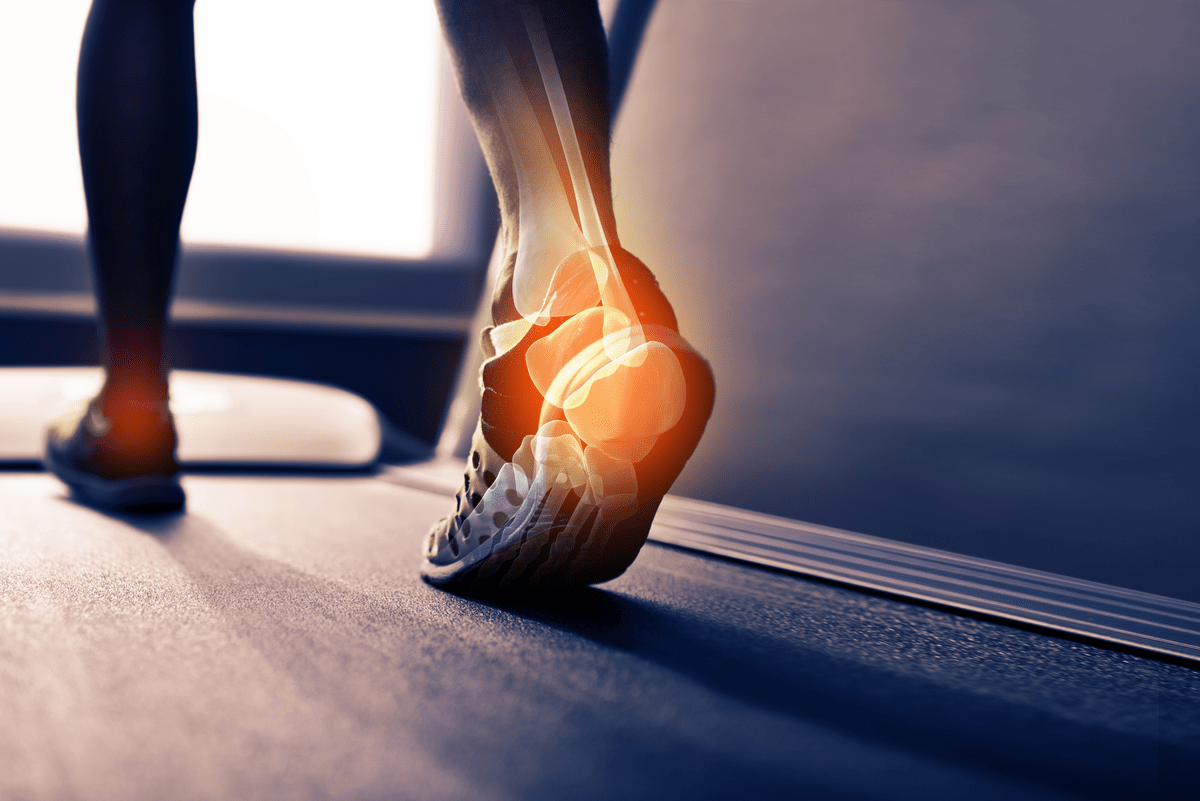Do your feet have high arches?
This simple test will help you answer that question at home: Dip your foot in a pan of shallow water, and then step onto a piece of cardboard. If the watermark does not reveal much of your actual footprint – maybe only the outer portion of your foot – you probably have a high arch, also called a cavus foot.
If your cavus feet are painful, it’s important to consult an orthopedic foot and ankle surgeon to get a professional diagnosis and a state-of-the-art treatment plan.
What are the symptoms of cavus feet?
Some people with cavus feet have trouble finding shoes that fit comfortably. High arches cause other problems for your feet too. Here’s why:
“Your arch runs under the foot – from the toes to the heel. And when you stand or walk on high arches, you put an excessive amount of weight on the ball and heel of the foot,” explains Jeffrey Levy, D.O., a fellowship-trained orthopedic foot and ankle surgeon with Riverside Orthopedic & Sports Medicine Specialists.
Other symptoms of cavus feet include:
- Ankle weakness
- Calluses
- Hammertoes (bent toes) or claw toes (toes clenched like a fist)
- Fractures
- An unstable foot (which can lead to ankle sprains)
- Foot drop (muscle weakness that causes you to drag your foot when taking a step – sometimes due to a neurologic condition)
What causes high arches?
You can develop cavus feet at any age – in one or both feet, says Dr. Levy. High arches are caused by a variety of medical or neurological conditions, including:
- An inherited structural abnormality
- Injury
- Cerebral palsy
- Charcot-Marie-Tooth disease
- Clubfoot
- Muscular dystrophy
- Spina bifida
- Stroke
Diagnosis of cavus feet
To make a diagnosis, your orthopedic foot and ankle surgeon will examine your entire foot – looking for bumps and other signs of deformity. Your doctor will also check the flexibility of your arches, test your muscle strength, and observe your walking pattern and coordination.
“It’s important that we make an accurate diagnosis. If the underlying cause of your cavus foot is due to a neurologic disorder or other medical condition, the appearance of your foot and your symptoms are likely to get worse over time,” explains Dr. Levy.
For a thorough diagnosis, you may need:
- X-rays of the feet and spine
- MRI of the spine
- Electromyography (to assess the health of muscles and nerves)
- Nerve conduction studies (to identify nerve damage)
- Genetic testing
If nerve issues are involved, your doctor may refer you to a neurologist.
Treating your cavus feet – without surgery
To help you feel better, Dr. Levy may recommend nonsurgical treatments first, such as:
- Activity changes
- Bracing (to keep the foot and ankle stable)
- Orthotics (shoe inserts, arch supports, foot pads, or other devices)
- Physical therapy
Surgical treatment for cavus feet
If you can’t get relief, he may recommend surgery to reduce pain and improve the way your foot functions.
“Our treatment recommendation will depend on your specific diagnosis, the cause of your high arches, and the type of damage and deformity in your foot,” explains Dr. Levy. “Typically, during surgery, we realign the foot or lower the arch, by cutting and repositioning the bones.”
Your foot and ankle surgeon may also:
- Repair fractures
- Tighten ligaments
- Transfer tendons to help correct deformity
- Lengthen the calf muscle
- Perform a joint fusion to eliminate painful motion
“Our goal is to give your body the ability to distribute weight evenly along the inside and outside edges of the foot,” explains Dr. Levy. “We may perform several procedures to correct the cavus foot and help you feel better.”
If you need care for cavus feet, you can make an appointment with Dr. Levy by calling 757-534-9988.



